Chris Baty's Blog, page 70
November 3, 2019
30 Covers 30 Days: Day 3
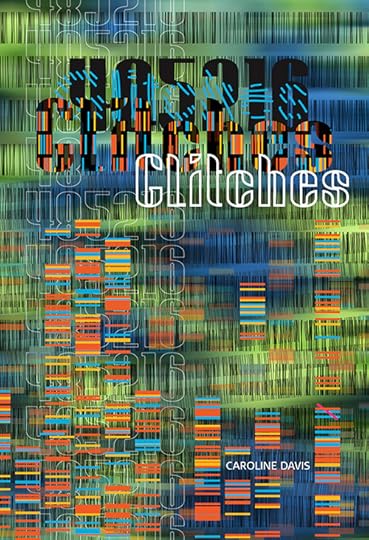
Every November, during National Novel Writing Month, thirty professional designers volunteer to create book cover art inspired by novels being written by aspiring authors from around the globe. Why? To encourage new, diverse voices, and help build a more creative world.
30 Covers, 30 Days is presented in partnership with designer and author Debbie Millman.
Day 3′s cover:
GlitchesCover design by Alberto Rigau, based on a synopsis submitted by Young Writers Program participant Caroline Davis
48-5-2-16 belongs to an ideal society in which efficiency and convenience are maximized upon. Rather than children being born and raised, they are genetically engineered and all “hatched” on the exact same date. 48, however, is different. Due to an error in coding, she, unlike her peers, has the ability to think, an unforgivable crime in a community where every citizen is programmed to have only basic processing skills. As 48 becomes a part of the adult world, struggling to hide her ability, she continues to meet others like her. As she tries to discover answers for her differences she finds that her glitch was programmed by someone who contains the knowledge to unravel their entire world.
Designer Alberto Rigau shared this note on the design:
The cover showcases an ‘under-construction’ typographic family called Domada by third year design student Emanuel González Ríos of UAGM’s Design School.

A lberto freelances from San Juan, Puerto Rico, collaborating with clients in the planning and execution of design-focused business strategies. With an academic focus on design, anthropology and photography, he crafts brands, exhibits, way-finding systems, publications and architectural collaborations of an interpretative nature. Alberto is a graduate of the Masters in Graphic Design program at NC State University’s College of Design, a Poynter Institute Visual Journalism Fellow and an alum of the S.I. Newhouse School of Public Communications at Syracuse University. Today he serves as a board member of AIGA’s Design Educators Steering Committee and teaches at UGAM’s Design School in Gurabo Puerto Rico. Follow him on Instagram @ajrigau!
Drop by the forums thread to discuss, lavish with praise, etc.!
November 2, 2019
30 Covers 30 Days: Day 2

Every November, during National Novel Writing Month, thirty professional designers volunteer to create book cover art inspired by novels being written by aspiring authors from around the globe. Why? To encourage new, diverse voices, and help build a more creative world.
30 Covers, 30 Days is presented in partnership with designer and author Debbie Millman.
Here’s day 2:
A novel by NaNoWriMo Participant C.M. Presta-Valachovic
As a coroner for San Francisco, Tasha Jackson knows trouble when it’s wheeled into the morgue. A double-masectomy cancer survivor who shaves her head bald to display her dragon tattoos and who indulges daily in SF’s glorious food scene, Tasha has never given a damn about finding a man – until now.
A wrinkled, saggy, gray-haired granny with the foulest mouth in Homicide, Agatha Jones carries her lead-cored cane for a reason, and it ain’t for balance. Together with her emotional support cats – two huge Maine Coons, Tiddles & Fluffy Pumpkin – she takes on the mean streets daily. Whatever Agatha’s cane can’t handle, Tiddles & Pumpkin are happy to deal with…until Agatha finds corpse after corpse of well-endowed young men in silken g-strings sprawled in oh-so-titillating positions all over the city, corpses that wind up on Tasha’s autopsy table with their pouty-lipped faces frozen forever into ghastly Glasgow grins.
Coroner & Cat Cop must now team up to find their man, before the killer redecorates all of San Francisco in blood and bodies…
Kevin is a designer, educator and organizational leader. He currently leads talent and operations at Struck and teaches at the University of Utah. His work has been recognized by some of the industry’s most respected organizations and publications including AIGA and Print Magazine. In 2014 he was selected by Graphic Design USA as one of the “People to Watch”. Kevin is the cofounder of Salt Lake Design Week and has held a number of roles with AIGA, the professional association for design, where he most recently served on the national board of directors.
Follow him on Instagram!
We’ve also made a post on the forums, so drop by to see the cover in higher resolution and leave some feedback/start a discussion!
3 Tips to Help You Finish Your Novel

Every year, we’re lucky to have great sponsors for our nonprofit events. Today, Alex Holcomb shares how Campfire, a NaNoWriMo 2019 sponsor, can help you finish your novel when you’re having trouble finding the right words:
It’s 9:59 a.m. on a Saturday morning. You want to hit 2,000 words for the day, but you can’t seem to even reach 200. You write a noun, then a verb, and then… nothing.
Exhausted from the cycle, you try slamming your hands on your keyboard and seeing if anything magical happens.
It doesn’t.
And that’s when it hits you: you’re fighting off writer’s block.
When you’re dealing with writer’s block, hard work is what gets you through it, but without strong planning, that hard work might not do anything. Let’s look at a few ways planning can get you through your first draft:
1. Stick to the PathFor most people, outdoor experiences consist of day hikes, hikes that only last a few hours and usually have a very obvious trail. More serious hikers might take on the challenge of backpacking or overnight hikes.
A day hike usually doesn’t require a map, but when backpacking, a map is an essential part of packing. You can follow the trail, but if you ever get lost or can’t quite see the path, you’ll be in serious trouble without a map.
Similarly, you can, with varying levels of success, write a short story or poem with little planning, but a long-form piece like a novel needs a map. Without it, even the best writers will have difficulty getting back on the trail when they get lost.
Of course, most people have an idea of where they want their story to go. Without planning, you can get somewhere on your story, but figuring out where to go next during writer’s block can be impossible, especially when creativity is nowhere to be found.
2. Know Thy CharactersMost writers know how important a character is to their story. In fact, most of the time, the characters are more important than the story.
Think of a sitcom like The Fresh Prince of Bel-Air. Without Will’s comedic flair and Carlton’s nerdy outlook, the show would be about an angry mother who got so mad she sent her son to the other side of the country.
Without vibrant characters, Ernest Hemingway’s The Old Man and the Sea is a sad story about an impoverished man who fishes for a living. The Office would feel like going to work without the antics of Jim and Dwight.
You could go on and on about shows, movies, and books that rely less on plot and more on developing and maintaining good characters. Hemingway himself once said, “When writing a novel, a writer should create living people; people, not characters. A character is a caricature.”
Without careful character planning, the actors are mindless robots roaming from one point to another. They stay flat as you focus on making sure you can get to the next plot development.
If you take time to get to know your own characters before writing, you’ll be able to get past writer’s block by asking, “What would my character do here?” In the same way you know how your best friend would react to a situation, you’ll know what to write when your character finds themselves in the right situation.

On the same note, defining your character arcs essentially tells you what they should do. For example, let’s say you want your character to learn to be selfless by the end of the book. If you’re at the beginning of the book, chances are you shouldn’t have your character give to a charity, but if you’re nearing the end, it should be a given that they would risk their life to save their friends.
3. Fear No PlotholesArguably one of the greatest plotholes of all time comes from J.R.R. Tolkien: The Great Eagles of Manwë from The Lord of the Rings series, giant eagles who are sapient and powerful, could have helped Frodo and Sam fly to Mount Doom and avoid the perilous journey of destroying the One Ring, but they don’t for unexplained reasons.
Of course, no one is arguing that J.R.R. Tolkien didn’t plan his story, but plotholes can cause serious issues in your writing. Even now, there’s enough debate about the Great Eagles of Manwë to fill up enough books to match all of the LOTR books.
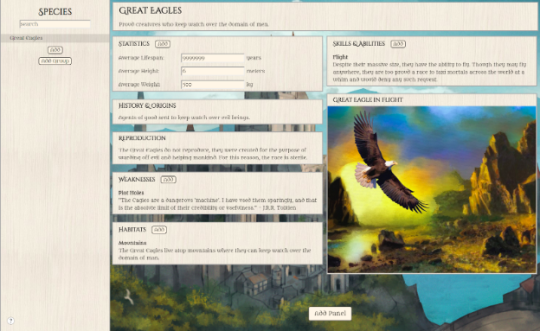
Planning your story helps you see these plotholes before you even begin your first draft. The last thing you want to be doing 10,000 words into a book is to be figuring out a way to explain an inconsistency you could have avoided before you had ever typed a word.
About CampfireCampfire is a writing software that helps you organize every part of your story from character development to the language your characters speak. Our specialty is helping you plan your story to become the best-seller you want it to be.
We’ve helped thousands of writers create their stories, and we recently raised over $37,000 to kickstart our next project: a web-based application with even more features than before.
Want to try Campfire Pro out completely free? Check out our free trial and get started with your next novel today. If you decide to purchase, don’t forget to use code NANOCAMPO at checkout for 25% off Campfire Pro.
Alex Holcomb is the social media manager at Campfire and a marketing professional based in Knoxville, TN. He enjoys reading more than writing, hiking with his fiancée, and definitely not writing bios. You can find his work scattered throughout the internet, on Twitter, and on his website acholcomb.com.
November 1, 2019
National Novel Writing Month Has Officially Begun!
 Start writing your novel with NaNoWriMo today!
Start writing your novel with NaNoWriMo today!
It’s here, writers––the moment you’ve all been waiting for. It’s time to buckle down and start writing those brilliant, magical, powerful stories that have been swirling around in your head.
Don’t forget to create your 2019 novel on the NaNoWriMo website. (Otherwise, you won’t be able to update your word count!) If you’re new to the site, or need a quick refresher on how NaNoWriMo works, check out our FAQs.
You can challenge yourself or your writing buddies to a word sprint, chat with other Wrimos on our forums, or join a Virtual Write-In. If you want to make some in-person writing buddies, be sure to join a region and check out your local events calendar!
Let’s start writing, Wrimos!
30 Covers 30 Days: Day 1

Every November, during National Novel Writing Month, thirty professional designers volunteer to create book cover art inspired by novels being written by aspiring authors from around the globe. Why? To encourage new, diverse voices, and help build a more creative world.
30 Covers, 30 Days is presented in partnership with designer and author Debbie Millman.
I’ve been seeing these covers come in, and boy am I excited to finally get to share them! So here we go:
A novel by NaNoWriMo Participant Jack Lawrence:
Untested investigative journalist (and stoner college student) Marianne Palinski accepts a heinous first assignment: to track down and write a story on Dr. Richard Vasquez, the ex-professor who went bonkers on LSD and fled the university with a small group of student disciples in order to commune with the spirits of Cassadaga, Florida—the psychic capital of the world. Correspondent Palinski’s first move is to enlist as navigator/spirit guide one Colleen White, her downstairs neighbor (and dealer) and a possessor of so-called “wild talents”… including but not limited to acid-induced telekinesis.
And it gets weirder! Competing for the first public Vasquez interview is the musclebound head of the ghost hunting reality TV show Freakiest Findings. To what depraved gonzo depths will Marianne and Colleen have to sink in order to break the story first?
Michael Braley, Creative Director of Braley Design has 25+ years of experience in brand, print, book, package and poster design. His work has been recognized internationally and is in the permanent collections of the San Francisco Museum of Modern Art, the Chicago Athenaeum Museum of Architecture and Design, The Denver Art Museum and the Museum fur Kunst und Gewerbe in Hamburg, Germany. Most recently, his poster designs have been exhibited in the International Biennale of Graphic Design: Moscow, Ecuador Poster Bienal: Bolivia, Graphis, and Communication Arts.
Be sure to visit his website, and follow him on Instagram!
We’ve also made a post on the forums, so drop by to see the cover in higher resolution and leave some feedback/start a discussion!
3 Ways You Can Show a Character’s Culture

Diversity makes stories better, plain and simple. This year, we’ve partnered with the good folks at Writing With Color to get some advice on how to write stories populated with people of all racial and ethnic backgrounds. In this post, contributor Jess Liang gives advice on how to show culture without falling back on cliches:
One thing I’ve noticed when reading
stories with characters of color, or characters meant to be from a foreign
country, is that all too often writers will resort to depictions like 1) having
their dialogue sprinkled heavily with their home language, even when talking to
those who don’t speak it, or 2) making the character little more than
stereotypes. As a Taiwanese-American, I understand the efforts people are
making toward more diverse representation in writing, so I thought I would show
everyone ways to depict someone’s culture in a more well-rounded, believable
way.
In my opinion, food is such a critical
part of a culture. Research the cuisine! Look for foods and beverages that
people might eat for ordinary meals, but also look at holiday foods, too. How
are meals served in that culture? What kind of courses are there? Also, think
about snacks, or street food, even (quite a few cultures have great street
food!).
Another thing to look for: how do they
eat? Do they use their hands, or do they have different utensils, such as
chopsticks? One thing I noticed was how at Western restaurants, customers had
individual meals, while in Chinese restaurants, we eat “family-style,” which is
having all the food on the table for everyone to share.
A note for diaspora characters: we don’t necessarily eat the food of our
ancestral cultures 24/7. We do eat the foods from various cultures as well,
although the ancestral culture food may very well have a special place in our
heart when it comes to comfort food or holidays.
What other cultures do in everyday life
matters, too. Some make a point of taking off their shoes when they’re indoors.
And some have rules about what gift to bring when you’re visiting someone who’s
ill, from ideal colors (red, for example) to forbidden items (in Chinese
culture, pears are discouraged, because they sound like the word “leave”).
Maybe there’s even a way things are done
in certain families, like never using the dishwasher to showering at night
instead of the morning. (Remember, this may differ from person to person.)
And then there are holidays such as Lunar
New Year or the Mid-Autumn Festival. These are very important, and in countries
that celebrate these holidays, there will be time off, but if they’re diaspora
and the country itself doesn’t give time off (like the US), people will have
smaller celebrations, although they’re just as important. Sometimes they’ll
push the celebration to the nearest weekend so that they can give the holiday
the attention it deserves, or mention offhand the sort of things they have to
do for it. For example, the Lunar New Year often has celebrations in local
Asian communities, and some super traditional families may wear red.
We don’t usually pepper random words here
and there, unless we’re with those who also speak it too. For example, I’ll
only speak English with someone who knows English but not Mandarin. Or, if one
person’s mother tongue is Mandarin (ex: my mom) and she’s more comfortable
speaking that, then I will speak Mandarin with her with some English sprinkled
in. But the key thing to remember is that for the most part, code-switching
works best when all parties know the languages in question.
If you want to show another language
without the peppering, you can do it by using honorifics with people within the
culture (such as terms for aunts/uncles/family friends), or even certain terms
for food or customs (especially if they would seem clunky translated
word-for-word, or can’t really be translated). This way gives readers a glimpse
into the culture without making the characters come across as stereotypes.
I hope these tips are helpful when it
comes to writing these sorts of characters! Best of luck in your writing!
Jess was born and raised in Michigan, and while she’s been overseas and
coast-to-coast, there’s no place like home. She writes speculative fiction with
a focus on contemporary fantasy. When she’s not writing, she likes to try out
new recipes, knit everything from blankets to socks, and watch She-Ra on
Netflix.
October 31, 2019
How to Explain NaNoWriMo to the Important People in Your...
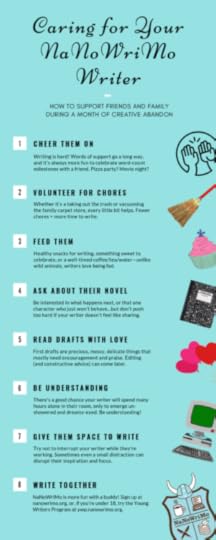
How to Explain NaNoWriMo to the Important People in Your Life
Having the support of your friends, family, or other important people in your life can help you
accomplish your creative goals. But the truth is, sometimes they just don’t get it. They might not
understand why you want to prioritize your writing over other activities this month.
The best way to get people on your side is often by being open and communicative about your
motivations, although we realize it’s not always the easiest thing to do.
That’s why we’ve made this infographic to show writer-adjacent people how they can best support
the NaNoWriMo writers in their lives.
Image text reads:
Caring for Your NaNoWriMo Writer: How to support friends and family during a month of creative abandon.
1. Cheer them on
Writing is hard! Words of support go a long way, and it’s always more fun to celebrate word-count milestones with a friend. Pizza party? Movie night?
2. Volunteer for chores
Whether it’s taking out the trash or vacuuming the family carpet store, every little bit helps. Fewer chores = more time to write.
3. Feed them
Healthy snacks for writing, something sweet to celebrate, or a well-timed coffee/tea/water—unlike wild animals, writers love being fed.
4. Ask about their novel
Be interested in what happens next, or that one character who just won’t behave… but don’t push too hard if your writer doesn’t feel like sharing.
5. Read drafts with love
First drafts are precious, messy, delicate things that mostly need encouragement and praise. Editing (and constructive advice) can come later.
6. Be understanding
There’s a good chance your writer will spend many hours along in their room, only to emerge un-showered and dreamy-eyed. Be understanding!
7. Give them space to write
Try not to interrupt your writer while they’re working. Sometimes even a small distraction can disrupt their inspiration and focus.
8. Write together
NaNoWriMo is more fun with a buddy! Sign up at nanowrimo.org or, if you’re under 18, try the Young Writers Program website at ywp.nanowrimo.org.
Properly Coded: Creating Characters of Color (Part 4)
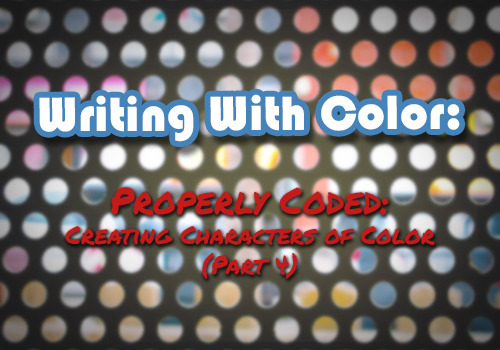
Diversity makes stories better, plain and simple. This year, we’ve partnered with the good folks at Writing With Color to get some advice on how to write stories populated with people of all racial and ethnic backgrounds. In the fourth part of her sub-series “Properly Coded,” Alexa White talks about a few mistakes to avoid when writing characters of color:
We are finally making characters.
You should have an idea of their frames of reference, their backgrounds, and the world they inhabit. You should also use tools like WWC’s Research Chart to help you flesh out the character.
Except even with all that work, you’re probably still caught up in a few little things that you need to work through in order to really be respectful.
1. Cultural purity is a toxic conceptSay it with me: cultures interacting with the modern world will grow and change to adapt to modern society, and this does not necessarily mean they are getting destroyed.
This means Natives have rules for digital content sharing and own cell phones. A Korean family might have a tradition of making bacon cheeseburgers every Friday. An Indian woman might prefer ballet to kathak. All because they have been exposed to the modern world and have taken what they like from it.
None of this means they’re “doing their culture wrong.”
Culture is an ever-growing, ever-evolving, ever-shifting thing that is highly adaptable to everything you can possibly throw at it. These societies have handled invention, innovation, technological advancement, and cultural diffusion for sometimes millennia.
We are not museum dioramas that popped up in the 1800s that were thrust into the modern world and are frantically working on returning to “the old ways.” The problems occur when we aren’t allowed to make choices for ourselves, and our ways of life are actively getting stomped out because of assimilation. But individual people can and will take what they like from other cultures to enjoy. That is their right.
2. We’re not “on” 24/7When you start to consume the emotional labour of people of colour, you might subconsciously start to pick up that activism is their hobby. They often dedicate a lot of time to it, complain about the isms they face on the regular, and just generally be very open about interacting with the systems that harm us.
Do not conflate “interacting and existing” with “the contents of life.”
We’re dancers. Cooks. Dog walkers. Artists. We kick back and play Minecraft at the end of a long day adjusting spreadsheets to fit our boss’ needs. Our hobbies span the same gamut as every other white person, even if (sometimes) the expression of it is different.
Despite all the differences in experience, humans have always been humans. Graffiti translated across the globe ends up looking all like the same thing; we tell jokes, cook dinner, play games, sleep, date, raise children.
Just because we had different experiences than you, doesn’t mean we’re made of different stuff.
3. Not everyone is going to be the same kind of self-awareActivism on the internet often has the same sort of end point: freedom of some sort. We’re all working towards about the same goal. But not everyone is going to agree with how that looks, and what steps should be taken to reach it.
You have to be very careful writing about inter-community issues (colourism being a pretty common one), but you also have to be very careful that all your characters don’t end up sounding like the same small cluster of activists. Disagreements on the nuance of how to accomplish something happen, even among those small clusters. And if you don’t have that disagreement, everyone is going to be a cardboard cut out.
Go forth and make charactersThis series was a basic toolkit to get you started at square 1. It’s not exhaustive; it’s not even that comprehensive. It is a beginning.
Keep learning. Never stop learning. Because the minute you stop is the minute you lose the plot.
Happy writing.
~Alexa

Alexa White, also known as Mod Lesya on Writing with Color, is a Mohawk two spirit person from Southern Ontario, who joined Writing with Color to help educate others. A lifelong lover of storytelling, she dedicates her focus to making characters feel like they come from whatever setting they’re supposed to exist in. If she is not found writing, she is playing with her cat, cooking, or drawing.
October 30, 2019
Finding a Writing Community with Dabble

Every year, we’re lucky to have great sponsors for our nonprofit events. Today, writer Christin David shares how Dabble, a NaNoWriMo 2019 sponsor, helped her find her writing community:
Jump, and you will find out how to unfold your wings as you fall.
—Ray Bradbury
After some writing adventures as a teenager twenty-something years ago, NaNoWriMo got me back into writing fiction in 2016. The key for me was to dedicate some time and energy every day to this one goal. The realization that I could write a coherent, interesting story (despite my day job as a scientific researcher and university teacher) gave me a huge boost in confidence. Reaching the goal of 50k words each November by writing two hours a day renewed the desire of my adolescence to bring stories from mind to paper. It has opened a floodgate.
Motivation is a feeble thing, though; it tends to slip away when looking at a blank page and wondering how on earth to fill it. My interest was sparked in a writing software that would allow me to plan and organize my ideas, but many softwares overwhelmed me with functionalities I didn’t need. Halfway through November 2017, I became a Dabbler.
I found the perfect companion in Dabble to evolve my random writing habit into a regular activity without losing inertia and without anxieties creeping in. Its simplistic design and auto-focus is free from distractions; it keeps track of writing goals; accounts for days off; and even syncs with the NaNoWriMo word count. These days, I’m writing fiction whenever my brain itches and my fingers twitch. Dabble is always with me, on- and offline, on all my devices (and, thanks to automatic cloud backup and synching, I never miss a beat).
Dabble just celebrated its 2nd (!) birthday and I feel like a pioneer. I found Dabble to be more than a writing app. With Dabble, service is personal, as you can make suggestions and discuss any issues directly with its developer, founder and only full-time employee, Jacob Wright, on its dedicated forum or through the app itself. There, I felt right at home between people who debate every aspect of the craft and who enjoy having a direct influence on the product they use. For me, the support of such a community has been vital and gave me lots of insights into the tricks of habitual writers. Though I am not a professional, I feel among equals. We all love to write.
“Dabble’s ever growing community has been a major factor for me to keep going, to improve my writing habits and to, ultimately, self-publish my short stories.”I didn’t think I wanted more. I knew, I had stories in me—and I was surprised at how many ideas rushed over me, once I allowed them to come. As an introvert, however, I rarely showed my finished stories to friends and family, publishing for a wider audience seemed unthinkable. Finding the courage to do something outrageously new is tricky. Dabble’s ever growing community has been a major factor for me to keep going, to improve my writing habits and to, ultimately, self-publish my short stories.
I’ve included the Camp NaNoWriMo events in April and July into my calendar, where I set less stressing personal writing goals for myself (e.g. editing my November draft in April, and collecting ideas and outlining a plot in July. Dabble as a community has given me the courage to follow this path and to not give up on my dreams. (I’m still terrified of the idea that it’s now all out there, though!)
A final note: As a scientist, I adhere to the scientific method. Each scientific publication is as dry, honest and precise as possible. I try to spread my wings in the evenings. And I love to fall into the unknown.

Dr. Christin David is a German scientist, teaching students about the laws of Nature by day, while writing fiction whenever time allows. Traveling frequently on the job, she draws inspiration from every corner of the world and inevitable, weird encounters. Her stories are full of mysteries, a healthy bit of laughter, and sometimes even science. Still trying to figure out a genre or niche, she has self-published a collection of short stories [in German ;)] written during NaNoWriMo 2017. Follow her on Twitter @CDavid_Fiction
Top photo by John Schnobrich on Unsplash.
The Do’s of Writing People of Color: Learn From Mistakes
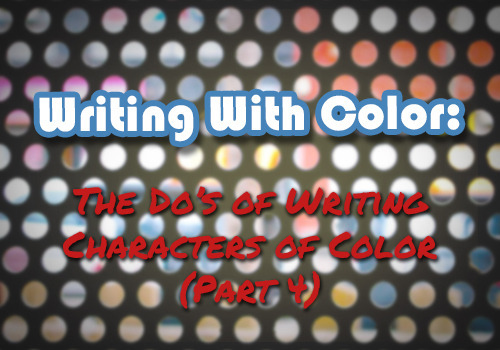
Diversity makes stories better, plain and simple. This year, we’ve partnered with the good folks at Writing With Color to get some advice on how to write stories populated with people of all racial and ethnic backgrounds. In the third part of her “Do’s of Writing People of Color” sub-series, founder Colette Aburime talks about how to recover when you make mistakes:
So you’re gearing up to write some exciting, diverse stories. With all that research under the belt, your sights are set on getting it right. It’s a good mindset to have and absolutely do your best! Still, expect to overlook or misrepresent some aspects of your Characters of Color.
Maybe you included a universally accepted no-no, such as comparing a Person of Color’s skin color to food instead of more favorable words for skin tone. It could be nuances missed by not being in the group. Perhaps it’s something more subjective that some have an issue with, but others don’t mind.
How to avoid mistakes (in the first place)Ideally, you’ll avoid making huge missteps if you’ve prepared on the front end.
Before you write:
Research - Know the dos & don'ts, associated stereotypes, & culture Read stories by the groups you’ve included. How do they represent themselves?Practice - Start with small-scale projects. Get out the goofs before the stakes are high. Plan - Build a profile & backstory for your Characters of Color.Worry - Some fuss is good. It makes you double-check your story for sound representationWrite, gather feedback, and write again. Oh, and don’t forget to describe those characters so we know their background!How to handle mistakesYou put in the pre-work. Still, readers are unhappy about something you’ve written.
This is your “keep calm and carry on” wake-up call. No need to throw down the pen and vow never to write inclusively again. Stuff happens! Now you push through it.
The best place to start is to hear the readers out, say you’re sorry, and to get better.
1. ListenTake in the criticism, and keep track of their feedback. If an option, ask for clarification. You want to fully understand what was uncomfortable for the reader(s).
This is free writing advice, even if it isn’t said nicely. On the other hand, not all criticism is created equal. Feel free to ignore counterproductive feedback like “Don’t write PoC.” or anything that snubs having a diverse and humanly flawed cast of characters (Check out: Stereotyped vs Nuanced Characters and Audience Perception).
2. ApologizeYou’re not the first or the last to write something that upsets people. You’ll recover, but apologizing is essential to that. Take your blunder with grace. Acknowledge your error and the offense it has caused. Being too defensive or over explaining intent can turn an apology into a disclaimer.
3. Do betterResearch the criticism. Focus some research specifically on the issue at hand. You want to truly understand where you went wrong so you can go right next time.Gather feedback. Get a second or even third opinion. Seek people in the groups you’re writing on. Having beta-readers check over your story is key to making it better. Know your limits. If you’re not in the group, there’s no reason to pretend to know exactly what it’s like to be the person you’re writing about. It’s only natural to not know some things, and small, missed nuances are forgivable. Re-write or improve on future works. If it’s possible to mend a piece after a pretty big mistake, do it. If there’s a second installment, make things right going forward. Otherwise, show your improvement in your next pieces.It’s easy to doubt whether you should write with diversity after running into roadblocks, but don’t let a stumble keep you falling forever. To err is human, isn’t it?
All and all, worry a little and write a lot. You’ve got this.

Colette Aburime is the founder of WritingWithColor, a writing advice blog focused on diversity. She studied creative and professional writing in college, and writes (or rather, dreams of writing) in her free time. Colette is a big fan of romance and fantasy and lives out her fairytale in a humble cottage in Minnesota’s Twin Cities. She spends happily ever after with her prince, plants, and a feisty cat. Check out WritingWithColor on
Tumblr
and
Twitter
.
Chris Baty's Blog
- Chris Baty's profile
- 63 followers



